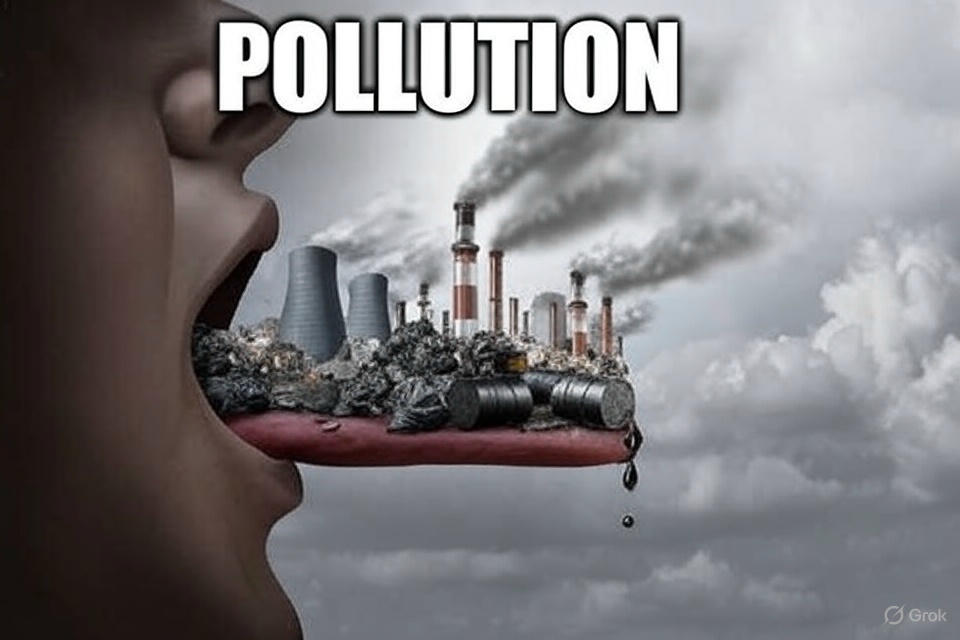Pollution: Types, Consequences, and Solutions | Smart Study Academy
Pollution: Types, Consequences, and Sustainable Solutions
By Smart Study Academy
Pollution remains one of the most critical environmental challenges of the 21st century. It affects every aspect of our ecosystem— air, water, soil, and living organisms—and contributes significantly to global climate change, health crises, and biodiversity loss.
In this comprehensive guide by Smart Study Academy, we explore the types of pollution, their devastating consequences, and effective solutions—all presented in an organized, point-wise format for better understanding.
1. Types of Pollution (10 Main Categories)
- Air Pollution – Emitted by vehicles, industrial activities, and fossil fuel combustion.
- Water Pollution – Caused by untreated sewage, plastic waste, and chemical spills.
- Soil Pollution – Triggered by pesticides, improper disposal, and industrial discharge.
- Noise Pollution – Generated by traffic, construction, and loudspeakers.
- Light Pollution – Overuse of artificial lighting disrupting ecosystems.
- Thermal Pollution – Heated water released into rivers/lakes by industries.
- Plastic Pollution – Waste plastic harming marine and terrestrial life.
- Radioactive Pollution – From nuclear plant leaks and unsafe waste handling.
- Visual Pollution – Urban clutter like billboards, cables, and trash.
- Microbial Pollution – Spread of bacteria and viruses via waste and sewage.
2. Impacts and Consequences
- Health Hazards – Causes diseases like asthma, cancer, and infections.
- Contaminated Water Supply – Leads to cholera, typhoid, and hepatitis.
- Soil Degradation – Reduces crop quality and food safety.
- Climate Change – Accelerates global warming through greenhouse gases.
- Loss of Biodiversity – Destroys natural habitats and species populations.
- Ozone Layer Depletion – Increases harmful UV exposure.
- Food Chain Disruption – Toxins passed from animals to humans.
- Noise Disorders – Stress, hearing damage, and sleep problems.
- Economic Impact – Higher healthcare, clean-up, and crop failure costs.
- Environmental Decline – Polluted landscapes and deteriorating cities.
3. Sustainable Solutions
- Eco-Friendly Transport – Use public transit, EVs, and bicycles.
- Renewable Energy – Shift to solar, wind, and hydro sources.
- Efficient Waste Management – Recycle, reuse, and compost effectively.
- Ban Single-Use Plastics – Replace with biodegradable alternatives.
- Green Urban Development – Promote sustainable infrastructure and green spaces.
- Reforestation – Plant trees and restore forests.
- Sustainable Agriculture – Use organic farming and reduce chemicals.
- Industry Regulation – Enforce emission norms and monitor factories.
- Community Awareness – Educate people through schools and campaigns.
- Support Green Innovation – Invest in clean technologies and solutions.
Smart Study Academy’s Final Note
Pollution is not just an environmental concern—it's a global crisis. Through education, awareness, and collective action, we can overcome it. At Smart Study Academy, we encourage everyone to be part of the solution and create a sustainable future.
Explore More Articles:
- How Climate Change Affects Our Daily Lives
- Plastic Pollution: A Hidden Global Emergency
- Top 10 Environmental Practices for Students
- The Link Between Pollution and Global Warming
Stay aware. Take action. Learn with Smart Study Academy.
